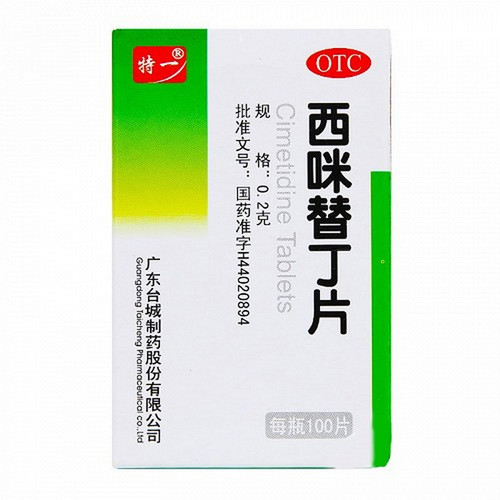Product Overview
[Drug Name]
Generic Name: Proglumide Tablets
Trade Name: Teyi
English Name: Proglumide Tablets
Chinese Pinyin: Binggu’an Pian
[Ingredients]
Proglumide. Chemical Name: (±)-5-Dipropylamino-4-benzamido-5-oxo-pentanoic acid.
[Properties]
This product is a white tablet.
[Indications]
Commonly used for gastric and duodenal ulcers, chronic superficial gastritis, and duodenitis.
[Dosage and Administration]
Oral. Adults: 0.4g each time, 3-4 times daily, 15 minutes before meals, for 30-60 days. Dosage schedule can also be determined based on gastroscopy or X-ray results. Children: 10-15 mg/kg each time, 3 times daily, 15 minutes before meals. The duration of treatment depends on the condition.
[Adverse Reactions]
This product has no significant side effects. Occasional adverse reactions include dry mouth, constipation, itching, insomnia, abdominal distension, and lower limb soreness, which generally do not require special treatment. Temporary leukopenia and mild transaminase elevations have been reported in some cases.
[Contraindications]
This product is contraindicated in patients with complete obstruction of the cystic duct or biliary tract.
[Precautions]
1. This product has a weaker inhibitory effect on gastric acid secretion than H2 receptor antagonists and is no longer used alone in the clinical treatment of ulcers, but its choleretic effect is highly valued.
2. During treatment, avoid tobacco, alcohol, irritating foods, and emotional trauma.
[Use in Special Populations]
Precautions for Children: Follow your doctor's advice.
Precautions for Pregnant and Breastfeeding Women: Follow your doctor's advice.
Precautions for Elderly: Follow your doctor's advice.
[Drug Interactions]
This product does not affect the metabolism of other drugs. If used concurrently with other anti-ulcer drugs, such as H2 receptor antagonists, it may enhance the inhibitory effect on gastric acid secretion and accelerate ulcer healing.
[Pharmacological Action]
This product is a gastrin receptor antagonist, with a chemical structure similar to the terminal endogenous structures of two intestinal kinins: gastrin (G-17) and cholecystokinin (CCK). Its amide functional group specifically competes with gastrin for gastrin receptors on parietal cells, significantly inhibiting gastrin-induced gastric acid and pepsin secretion. It has no significant effect on gastric acid secretion induced by histamine or vagus nerve stimulation. It increases the content of hexosamine in the gastric mucosa, promotes glycoprotein synthesis, and has a protective and healing effect on the gastric mucosa. It can improve the symptoms of peptic ulcers and promote ulcer healing. This product does not cause rebound gastric acid secretion in the treatment of peptic ulcers and gastritis, and can maintain normal gastric acid secretion for up to six months after treatment discontinuation. In addition, this product has a choleretic effect through three pathways: 1. It stimulates bile acid-independent bile secretion, facilitating stone excretion and flushing and unblocking the bile duct; 2. It modifies the factors that cause stone formation in bile, significantly increasing bicarbonate concentration and excretion while reducing the concentrations of free bilirubin, cholesterol, and calcium ions; 3. It antagonizes CCK, inhibiting the endogenous CCK-stimulating effect, thereby expanding gallbladder capacity and diluting bile components within the gallbladder, thereby preventing stone formation. This product is safe, with an acute oral LD50 of 17.8g/kg in mice.
[Storage]
Store in a dark, sealed container.
[Specification]
0.2g
[Packaging]
Plastic bottle, 50 tablets per bottle, 1 bottle per box
[Expiration Date]
24 months
[Approval Number]
National Medicine Standard H44021087
[Manufacturer]
Company Name: Guangdong Taicheng Pharmaceutical Co., Ltd.









